Slash has been inspiring guitarists for decades with his work in Guns N’ Roses, Slash’s Snakepit, Velvet Revolver, or his solo work.
In this guide, I’ll walk through Slash’s guitar rig so you can learn how he creates his tone.
I’ll cover Slash’s guitars, amps, pedals, and how all of these components work together.
Learning about other guitarists’ guitar rigs is a great way to learn what you might want to include in your own rig.
Check our more guitar rigs of famous guitarists here.
Slash’s Guitars
Slash (his real name is Saul Hudson) apparently owns hundreds of guitars collectively worth millions of dollars. You’ve probably seen photos like the one below and it’s crazy to think that these guitars are probably only a small part of his collection.
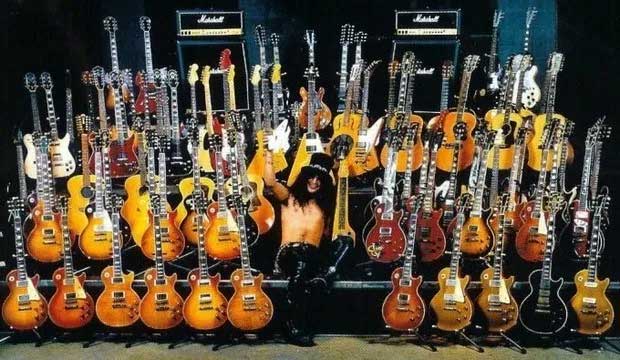
My sanity will quickly spiral out of control if I try to really dig into the guitars he’s used over the years. So in this guide, I’ll focus on the guitars he tours with today.
While he owns and has played a lot of different guitars over the years, when most people picture Slash, they think of him playing a Gibson Les Paul.
The below guitar is a 1987 Gibson Les Paul Standard Slash received from Gibson in 87 and has used live from the Appetite for Destruction tour to today.
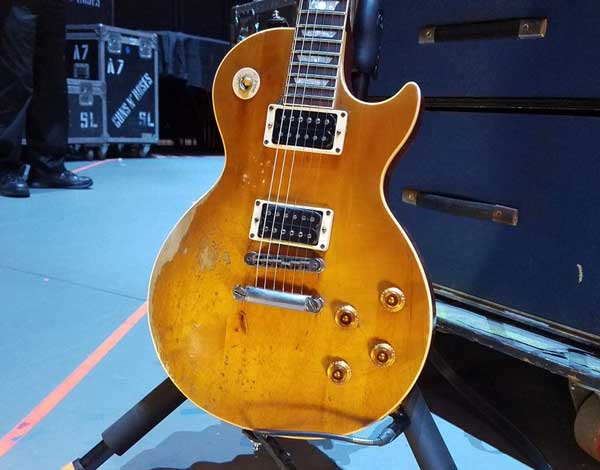
Slash also performs with a 1959 Gibson Les Paul replica built by Kris Derrig. This is the guitar used on the Appetite for Destruction album.

It’s interesting to find out that the tone you hear on that album wasn’t actually a Gibson, but a replica.
I could fill this guide just looking at the various Les Pauls he owns, but let’s move on to some other interesting guitars.
For the song Knockin’ On Heaven’s Door, Slash breaks out this EDS-1275 double-neck guitar.
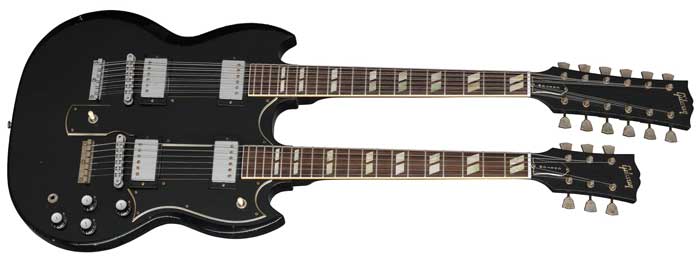
He also used it in the Use Your Illusion tour and his solo tours.
The below photo might look strange to some people who only expect to see Slash play Gibsons, but he has a long history of playing BC Rich guitars.

This guitar is a BC Rich Bich, which is a 10 string guitar. You can see the four extra tuning knobs on the body of the guitar next to the middle cutout.
Slash doesn’t ever use the extra four strings and doesn’t even have them connected.
Slash has also regularly used a BC Rich Mockingbird as shown below:
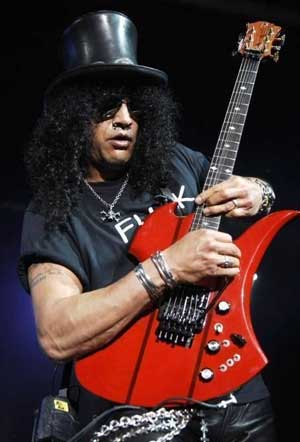
He doesn’t currently tour with this guitar but has used it extensively over the decades.
Signature Slash Guitars
As you might expect, Slash has his own signature Gibson Les Paul you can buy.
The Slash Les Paul Standard guitars come in two finishes: Appetite Burst (top) or November Burst (bottom):
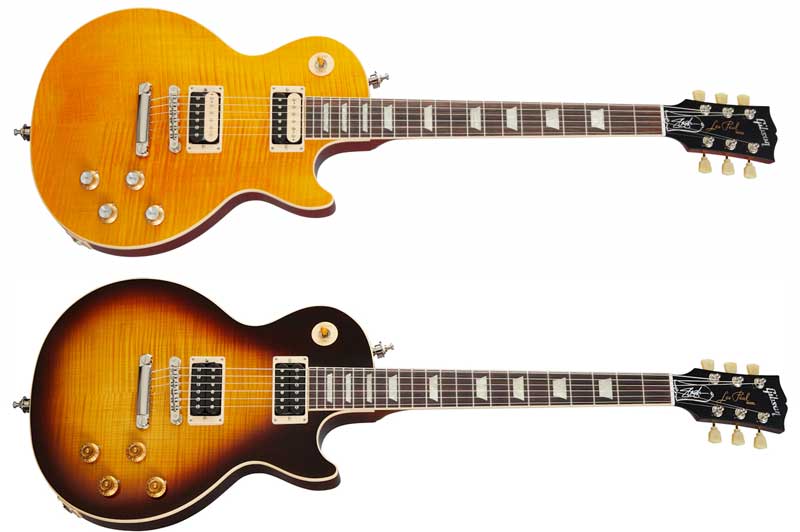
There are also two Limited Edition finishes: Vermillion Burst (top) or Anaconda Burst (bottom):

For acoustic guitars, Slash has a signature Gibson J-45 available in two finishes: November Burst (shown below) and Vermillion Burst (reddish burst).

Slash’s Guitar Picks
Slash plays with a variety of heavy 1.14mm Tortex guitar picks. These purple Dunlop Tortex picks are 1.14mm and match what Slash uses.
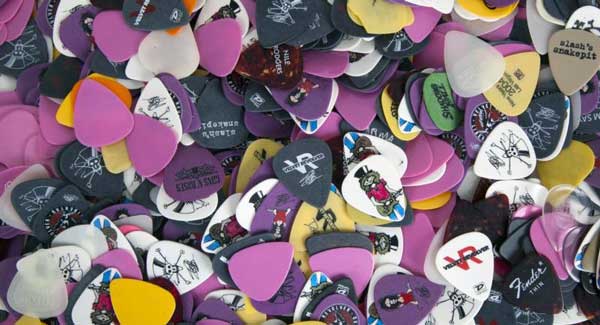
Slash plays with a heavy and aggressive playing style, so it makes sense he matches that style with a heavy guitar pick.
I suggest getting some of the 1.14mm Tortex picks or grab a variety pack to find the pick thickness that works for you.
Everybody is different and you may find that your perfect guitar pick thickness is different – even if you’re a die-hard Slash fan.
Find out more about guitar pick materials and thicknesses in this guide.
Signature Slash Pickups
In almost all of Slash’s guitars, he uses his signature Seymour Duncan Alnico II Pro humbuckers (link to Amazon for price and details).
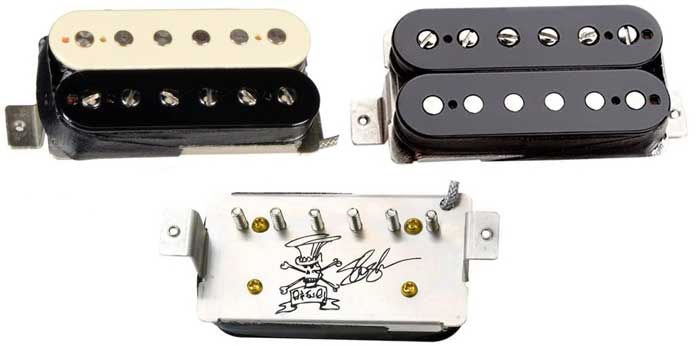
These pickups are available in all-black or ‘zebra’ as shown above.
These pickups are low to medium output
In interviews, Slash has said that any new guitar he gets, he usually just puts these pickups straight in.
Slash’s Guitar Strings
Slash uses Ernie Ball Paradigm guitar strings with a gauge of 11-48. Slash uses heavier gauge strings because he tunes down as well as plays with an aggressive attack.
Check out the 11-48 Paradigm Strings here.
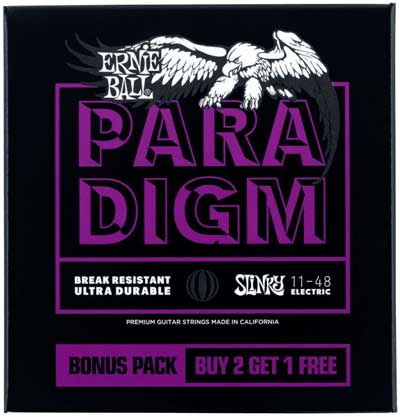
Most of the time, Slash tunes down to Eb Standard, which is a half-step below standard (Eb Ab Db Gb Bb Eb).
Learn everything you would want to know about Eb Tuning in this guide.
If you’ve ever tried to play any of Slash’s riffs such as Sweet Child O’ Mine in standard tuning, you’ll notice that it just doesn’t sound quite right. Changing your guitar to Eb Tuning is easy and will allow you to play along with Guns N’ Roses songs properly.
The slightly lower tuning plays an important role in the feel and sound of Slash’s music.
Using a heavier gauge set of strings compensates for the lower tension you get if you tune your guitar down. If you tune your guitar down to Eb but don’t like the looser string feeling, try a heavier gauge set of strings.
Find out more about string gauge and tension here.
Slash’s Guitar Amps
While Slash has used a few different amps over the decades (no doubt he has a massive collection), his main amp of choice is the Marshall JCM 25/50 2555 Silver Jubilee.
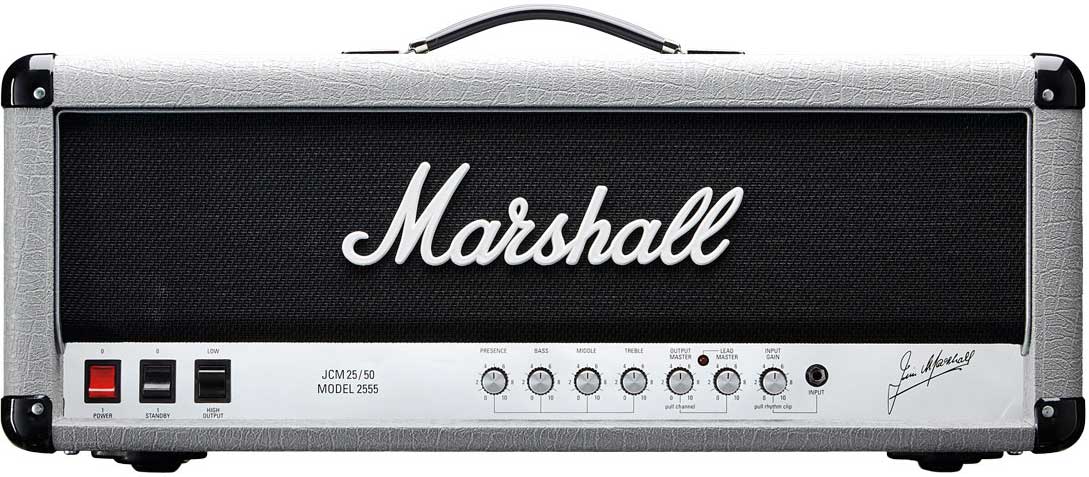
The above photo is for the reissue, the 2555X, but Slash uses his original Jubilees when touring.
The below photo shows one of his vintage Silver Jubilee amps for his dirty tone:
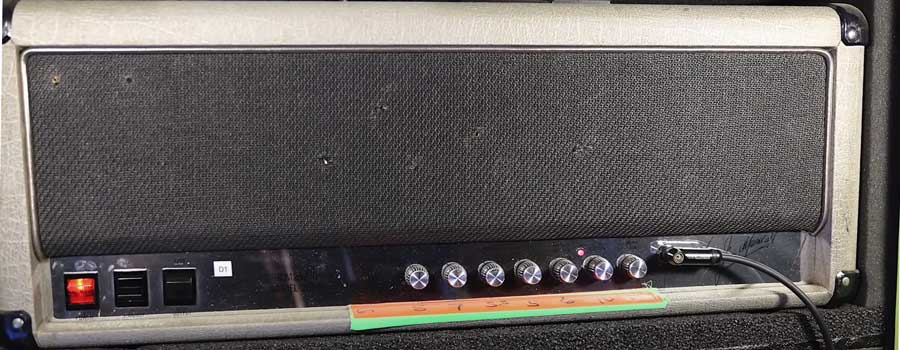
The amp settings for Slash’s dirty tone are:
- Presence: 5
- Bass: 7
- Middle: 5.5
- Treble: 5
- Output Master: 6
- Lead Master: 10
- Input Gain: 3
While these are Slash’s amp settings, don’t expect to instantly get a Slash-like tone by following these settings. Read this Ultimate Guide to Guitar Amp Settings to learn why you shouldn’t rely on amp settings like these.
You can see the indicator for the lead channel is active on this amp head as well as the below amp.
In addition to the two Silver Jubilees for his dirty tone, he also uses a Signature JCM Slash 2555.
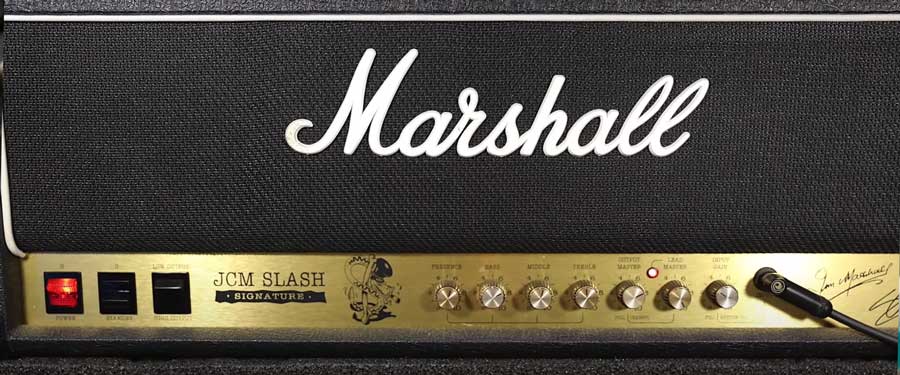
These amps are essentially reissues of the classic 2555 Jubilee and voiced the same way.
You can see in the above photos that the amp settings are basically identical to the Silver Jubilee amp settings.
For Slash’s dirty tone, he runs two out of three of these amps (one as a backup) to 4×12 cabinets boxed up below stage.
For Slash’s clean tone, he has a separate rig with two Silver Jubilee amp heads and a signature JCM 2555. These amps are using KT88 output tubes instead of the standard EL34 tubes, and a 12AT7 preamp tube.
Slash’s Wireless System
Slash uses a Shure UR4D+ wireless system with multiple units to allow easy switching between guitars.
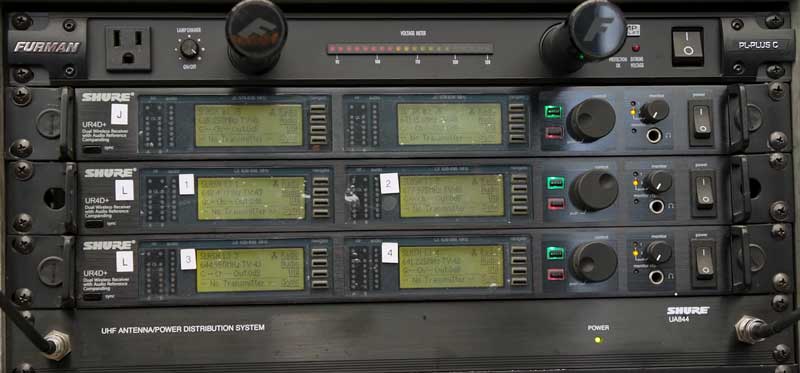
The signal from this wireless system is fed into his midi switching system to allow easy control of different tones and effects.
Slash’s Guitar Pedals
Slash uses a variety of pedals in his live rig and the majority of his rig has stayed the same for many tours.
The below photo shows his 2020 pedal rig:
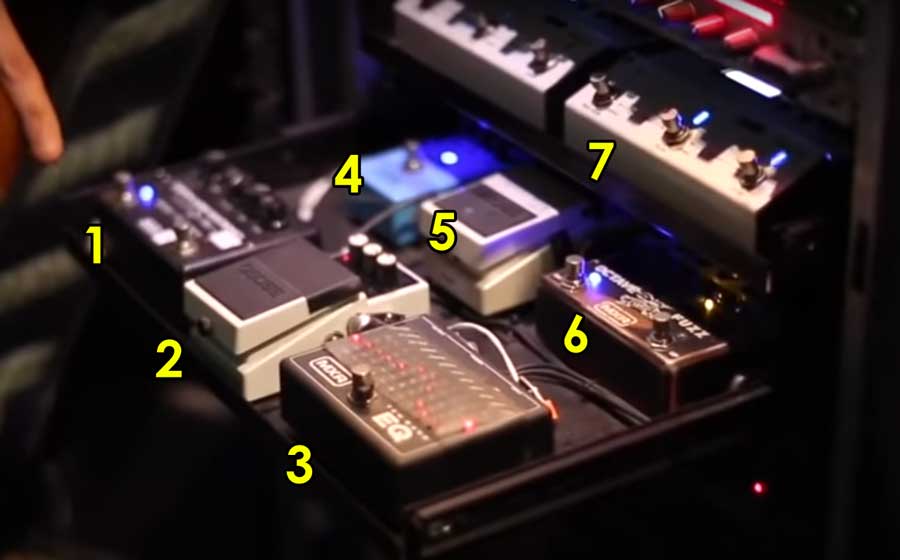
Don’t worry if this looks complicated. I’ll go through each of the above pedals along with the settings he uses so you can fully understand each pedal’s purpose.
Keep in mind that all of the above pedals on the lower shelf (1-6) plug into the front of his guitar amp. The two delay pedals (7) are fed into the effects loop of his amp.
All of these pedals are always turned on, then his switching system is used to enable and disable effects as needed. Read about the BOSS ES-8 Effects Switching system if you would like to do something similar to this.
Boost and Overdrive (1)
In the past, Slash used separate Custom Audio Electronics pedals for boost and overdrive.
He has now switched to the MXR MC-402 Custom Audio Electronics Booster and Overdrive, which is basically two pedals in one enclosure.
I did notice that in every photo and interview, the right footswitch was never turned on, so it seems Slash only uses this pedal for the boost function.

Slash says in interviews that this is mainly used during solos or sections when he needs a little bit extra.
If you want to build your own rig based on Slash’s sound, I suggest getting a boost pedal you like instead of trying to find this one. This pedal seems like overkill considering it doesn’t seem Slash uses the overdrive feature.
Noise Suppressor (2)
Slash uses a BOSS NS-2 Noise Suppressor to clean up his tone from noise.
A lot of live guitarists use this pedal to remove noise from their tone and help prevent feedback issues.
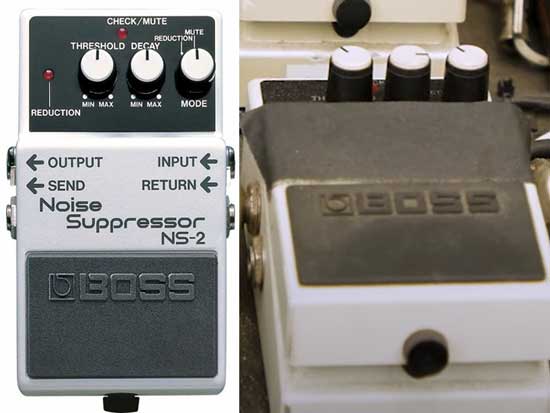
In the above photo, you can see that Slash has the mode knob set to ‘reduction’, which means the pedal filters noise out of his signal instead of gating the signal.
If you use a high-gain tone and you want to better deal with noise, learn about Noise Suppressors and Noise Gates in my Guitar Effects Course. The course demonstrates how these two different types of pedals can be used and which one may be right for you.
EQ (3)
Slash uses an MXR 10-Band EQ to compensate for the way his wireless system changes his tone.
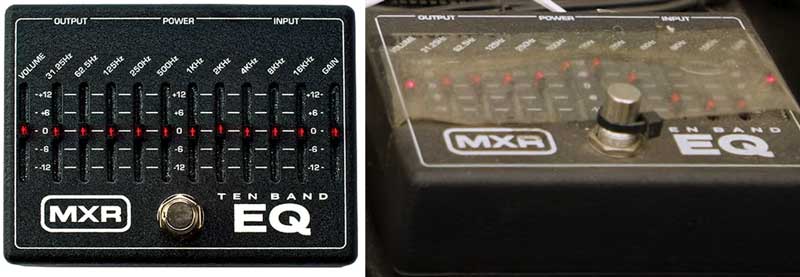
In other words, he only uses this pedal as a tool to deal with a specific issue with his live rig.
If you want to try to replicate Slash’s tone, you won’t need to buy this EQ pedal or any other EQ pedal.
Chorus (4)
The bright blue pedal in Slash’s rig is an MXR M234 Analog Chorus.
This pedal is used to give the clean guitar parts in Paradise City the iconic color and shimmer you would expect to hear in the song.
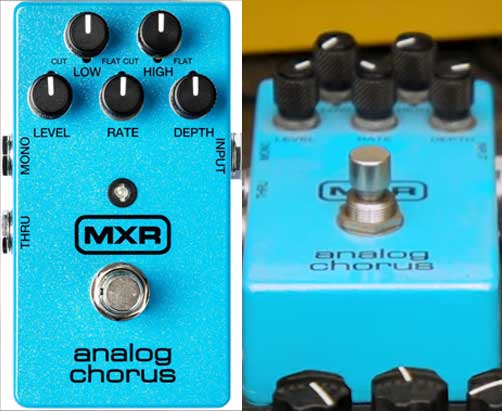
If you try to play the clean part to Paradise City without a chorus, it’s not going to sound right.
Whether you use this chorus pedal or any other chorus pedal, it will make a big difference.
In the past, Slash used an MXR Stereo chorus pedal, which is another very good quality chorus pedal to consider.
Check out some great chorus pedals in this Ultimate Guide to Chorus.
Delay Pedal (5)
The BOSS DD-3 Digital Delay has been in Slash’s rig for a very long time and plays an important role in certain songs.
Slash uses the DD-3 for the delay effect you hear in Welcome to the Jungle, Slither, and Rocket Queen.
If you want to replicate the delay you hear in those songs, here are the settings to use:
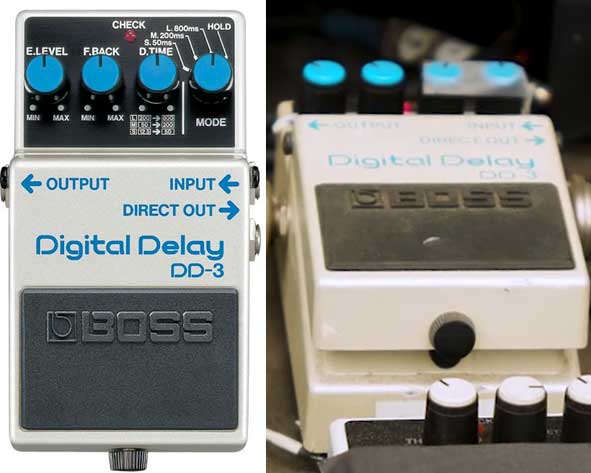
Remember that this pedal is placed in front of the guitar amp, which produces a pronounced delay sound.
Slash also uses other delay pedals in his effects loop, so he can get two very different delay sounds to suit different songs.
Octave Fuzz (6)
Slash uses the MXR SF01 Slash Octave Fuzz live on a few songs such as during the solo in Paradise City which originally had overdubbed octave parts.
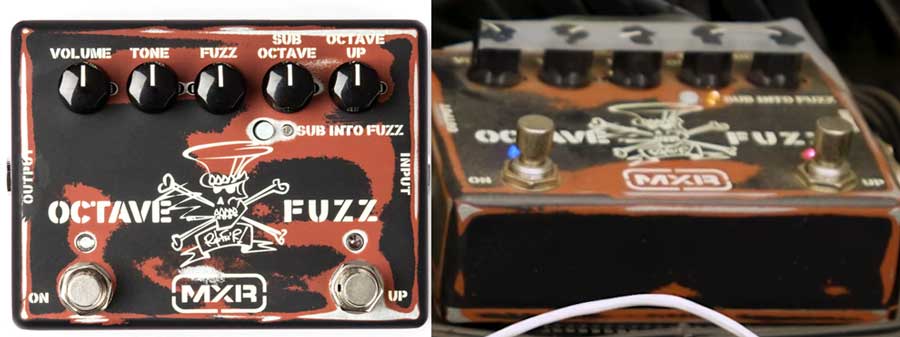
The tape over the knobs makes it clear that these are the settings Slash wants to use.
The main point I noticed was that the fuzz knob is turned down quite low, so this pedal seems to be more used more for the octave effects.
If you’re wanting to build a Slash-inspired guitar rig, this pedal isn’t as essential as it may seem. While it is a signature model, he only rarely uses it. On some tours, he doesn’t use it at all.
Delay Pedal (7)
On a separate rack shelf, Slash has two BOSS DD-500 Digital Delay units.
To be honest, I’m surprised Slash uses two of these pedals because they’re stereo delay pedals and can produce a wide range of delay sounds. You would think one would be enough.
As these are digital pedals, there’s no way to tell what the parameters are he uses. In one interview, his guitar tech said that he mainly uses it for slapback effects (learn about slapback delay in this lesson).
Slapback delay works best when you have precise control over the delay time, so it makes sense he uses two programmable delay pedals instead of the DD-3, which you can’t set to an exact delay time.
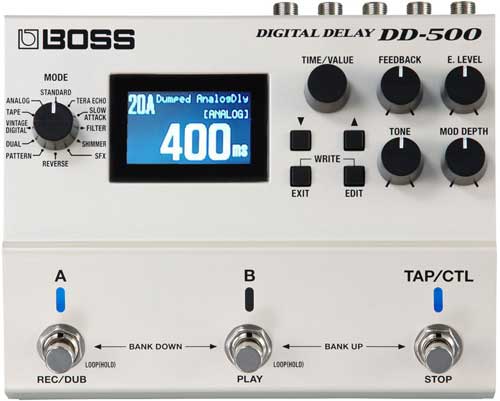
What’s important to note here is that these two pedals are placed in his amp’s effects loop. This changes the sound of the effect and the delay has a less pronounced sound compared to his DD-3 in front of his amp.
If your guitar amp has an effects loop, experiment with placing your delay pedal in the effects loop to learn how it changes the effect.
You may prefer to have your delay pedal in front of your amp, or in the effects loop. Or you may do what Slash does and have different delay pedals in either position for different types of delay effects.
Find out more about effects loops in my Guide to the 4-Cable Method.
Wah Pedal
When performing live, Slash uses a rack-based Wah with 3-4 controller pedals placed on the stage.
If you’re looking for a signature Slash wah pedal, there are two to choose from.

The Cry Baby SC95 (above left) is the more basic wah pedal tuned to a lower voicing than typical wah pedals.
The Cry Baby SW95 (above right) adds in a distortion circuit to the wah and you can see two knobs on the side to control for volume and gain. The distortion can be turned on/off by hitting the red switch on the side of the pedal.
If you’re comparing the SC95 and the SW95, the big question to ask yourself is whether you already have a distortion pedal you’re happy with, or you want the simplicity of having a wah and distortion all in one unit.
Learn more about wah pedals and other alternatives in my Ultimate Guide to Wah Pedals.
Power Supply
Tucked away in the back of the pedalboard is a Decibel 11 Hot Stone Deluxe power supply.

If you only have a few pedals, this is overkill and you can get away with daisy chaining your pedals to one power supply as explained here.
But when you start to build a larger pedalboard like Slash’s, a power supply like this one is worth considering.
An extremely popular alternative to the Hot Stone Deluxe is a Voodoo Labs Pedal Power 2 Plus covered in this review.
What I Like About Slash’s Guitar Rig
The main thing I like about Slash’s guitar rig is how he starts with a core tone of a Les Paul plugged into a Marshall, then he enhances that tone in various ways for different songs.
The core sound of his Les Paul into a Marshall probably covers at least 80% of the tone he needs during a live set.
But he uses various combinations of pedals such as boosters, delays, chorus, and octave fuzz to shape and change the tone as needed to get the other 20%.
This is a great way to think about your own guitar rig and tone.
Find out what your core tone is, then once you find a tone you love, find ways you can enhance or shape your tone when needed.
Think of any pedals or effects you use as the last 20% of your tone that can be used to take your playing in new directions.
Many guitarists strictly stick to their core tone and don’t stray from it. I feel Slash’s approach offers far more than if he were to stick to only using a Les Paul plugged into a Marshall.
How to Sound Like Slash
After reading all about Slash’s guitar rig, the big question you will no doubt have is how you can sound like him.
The key to sounding like Slash is to find the right balance between gain and sustain. Aim for a low-to-medium gain setting with a cranked tube amp.
Here are some tips to help you sound like Slash:
- Tune to Eb standard (Eb Ab Db Gb Bb Eb)
- Don’t turn the gain up too high
- Use a Marshall tube amp or Marshall-like amp
- Use humbuckers, but avoid high-gain pickups
- Add in effects as needed, but only use effects to enhance certain songs
All of the above points will play an important part in helping you get closer to Slash’s guitar tone.
Remember that Slash uses low-to-medium output pickups and the gain on his amps is set to 3. So most of what you hear in his drive tone is the result of cranking the volume in a tube amp.
Regardless of what amp you use, try to avoid the temptation to crank the gain. Too much gain will provide you with the sustain he is known for, but it also destroys the clarity and well-rounded tone Slash achieves.
If you ever ask in a forum or on social media how to sound like Slash (or any other iconic guitarist), you will be bombarded with people telling you that “tone is in the fingers”.
While there is some truth to this statement, it is not helpful advice.
If Slash were to plug into a high-output and high-gain rig, it’s not going to sound quite like him. Of course, you’ll still recognize his playing style and technique, but the tone won’t be right.
Slash plays Gibson Les Pauls into Marshall amps because gear does matter.
While you don’t need to have the exact same guitars, amps, or pedals as Slash, you need to try and find something with similar characteristics to truly get a Slash-like tone.
A Fender Stratocaster plugged into a Twin Reverb just isn’t going to get you close enough.
So while you should definitely focus on learning Slash’s songs and studying his playing techniques, ignore the people who say “tone is in the fingers”. That’s just what people say when they don’t know how to give you proper advice.
Once you have a guitar rig set up, your focus should be on learning some of Slash’s songs.
Listen closely to the recordings and tweak and adjust your rig to try and work your way closer to what you hear in the recording.
If you buy any pedals, take your time experimenting with them and don’t just stick to the pedal settings covered earlier. Those settings may work for Slash, but you may prefer different settings.
If you really want to learn in-depth about the guitar effects Slash uses or how to dial in specific guitar tones, check out my Guitar Effects Course. Studying the examples in the course is a great way to learn how to dial in specific guitar tones and will help you get closer to Slash’s tone.
Study the techniques Slash uses and watch videos of him playing live to see how he plays. If you really want to sound like Slash, the more time you spend studying his playing, the easier it will be for you to get closer to his tone.
Example Slash Guitar Rigs
Let’s go through a few examples of Slash-inspired guitar rigs at different budget levels so you can figure out what you might like to include in your own rig.
Lowest Price Guitar Rig
If you’re on a strict budget and want the cheapest Slash-inspired guitar rig, the main focus will be having a Marshall-sounding amp, a Les Paul-style guitar, and a wah pedal.
The reason I say ‘Marshall-sounding’ amp or ‘Les Paul-style’ guitar is that at the budget level, you shouldn’t worry about brand names. Just find a guitar that feels good and you like the look of.
Guitar: At this level, I would highly recommend any Les Paul shaped guitar not by Gibson. There are plenty of brands that build good quality Les Paul-style guitars at low prices.
A popular example is the Epiphone Les Paul Special II. You can read my review of the Special II here for details.
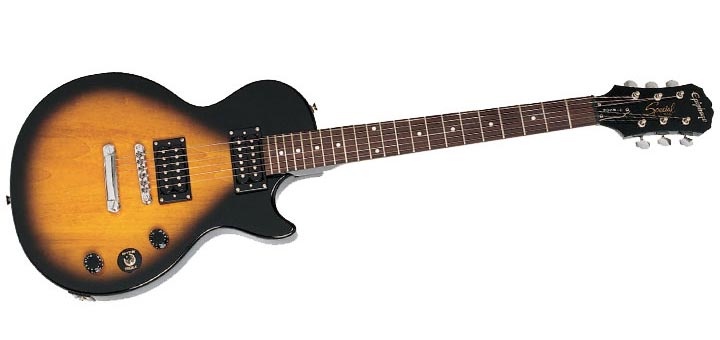
A guitar like this may not look, sound, or feel as impressive as an actual Gibson Les Paul, but it’s a good starting point.
Alternatively, you can get the Epiphone AFD Slash Les Paul:
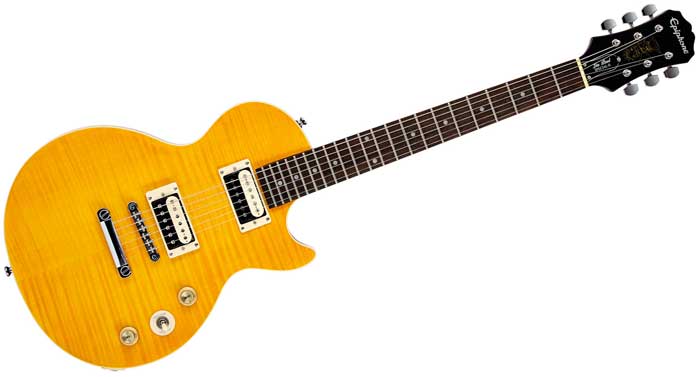
This is Slash’s signature Epiphone and gives great value for money.
Amp: don’t limit yourself to Marshall amps. While Marshall is an important part of Slash’s tone, there are many modeling amps that can produce a good Marshall-like tone.
Any modeling amp such as the Spark by PositiveGrid, AMPLIFi 30 by Line 6, or Marshall Code 25 will be perfect.
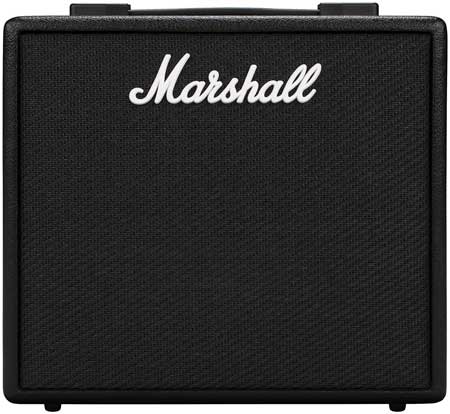
The reason I suggest a modeling guitar amp is because they allow you to access a wide range of tones as well as inbuilt effects.
This means you can experiment with delay, boost, chorus, fuzz, and other effects that Slash uses without having to buy any pedals.
The Marshall Code 25 is ideal if you really want the Marshall name on your amp. It’s a modeling amp so it does provide you with a nice variety of Marshall amp tones as well as inbuilt effects.
Wah pedal: if you don’t get yourself a wah pedal, you’re going to feel like you’re missing out when you jam to any of Slash’s songs. The wah is a key part of his sound, so I highly recommend getting one.
A simple wah such as the Original Dunlop Cry Baby is affordable and gives a great wah tone.
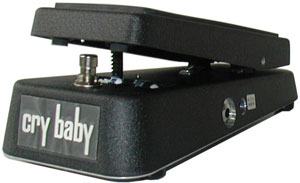
Check out my review of the Original Dunlop Crybaby here to learn more.
So here’s a summary of a decent budget-level Slash guitar rig:
- Guitar: Epiphone Les Paul Special II or Epiphone AFD Slash Les Paul
- Amp: Marshall Code 25
- Wah: Dunlop Cry Baby
Budget-Level Guitar Rig
If you have a slightly higher budget, you can either upgrade any of the above gear or you can start adding in other pedals to your rig.
Have a think about which part of the rig is most important to you to figure out where to spend extra money.
For most guitarists, upgrading to a better quality guitar will be a better decision compared to upgrading to a better amp.
Guitar: while you may be able to afford to buy a Gibson Les Paul, keep in mind that the lowest priced models will cost around $1,500 USD. You’re far more likely to get better value with a different brand offering a Les Paul-style guitar.
If you really do want a ‘real’ Gibson, check out the Gibson Les Paul Tribute:
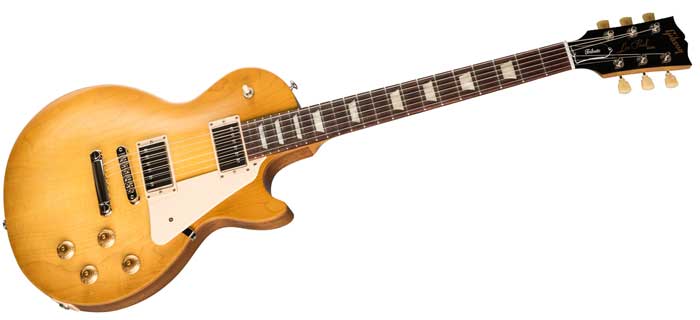
The Tribute was designed to give you the look and feel of a real Les Paul at about half the price of a typical Les Paul.
Alternatively, you could buy a nice Epiphone Les Paul such as Slash’s signature model, and upgrade the pickups to Slash’s signature Seymour Duncans.
Amp: at this level, I still feel that having a modeling amp is the best choice. It will include all effects you may want to use from time to time and it’ll give you a better amp tone than many of the budget-level amps available.
Sticking to an amp like the Marshall Code 25 or Code 50 is a solid choice.
Wah: you can definitely upgrade to one of Slash’s signature wah pedals if you want, but a basic wah such as the Original Dunlop Crybaby is significantly cheaper while providing you with the same basic effect.
So here’s a summary of a decent mid-level Slash guitar rig:
- Guitar: Gibson Les Paul Tribute
- Amp: Marshall Code 25
- Wah: Dunlop Cry Baby
My main recommendation at this level is to buy the best quality guitar you can find and stick to using a modeling amp for all of your effects and a Crybaby wah.
High-End Guitar Rig
When you get to a higher budget level, the choices become clear. You will want a real Gibson Les Paul with a Real Marshall stack.
Guitar: some Gibson Les Paul models go for eye-watering prices, so I’m not going to recommend any specific models. Just find one that you love the sound, look, and feel of. That’s all that matters.
A starting point is to look at the Standard 50s or 60s range (shown below) and figure out what you like the look and feel of.
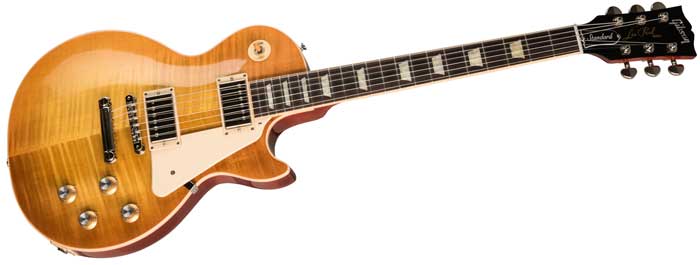
Amp: the real question to ask yourself is whether the Silver Jubilee 2555X Reissue is within your budget or not.
If not, find any Marshall stack (new or used) that you like the sound of. It is possible you find you prefer the sound of something like the JCM 800 over the Jubilee, so don’t feel you have to aim for the Jubilee.
Pedals: if you wanted, you could build a pedalboard using the exact same pedals Slash uses. Most of the pedals are easily available and don’t cost too much.
Some of the pedals you may choose to skip if you don’t think you’ll use them. Slash uses three delay pedals, but you can probably find one that does everything you want (the DD-500 is a solid choice).
If you really want to treat yourself, get a Line 6 Relay G10 Wireless System.
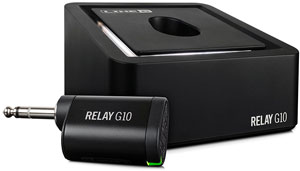
You can run around your house like Slash without cables tying you down and you won’t need to worry about the EQ pedal he needs with his wireless system.
Check out my review of the Line 6 G10 here to learn more.
So here’s a summary of a Slash guitar rig when you have a comfortable budget:
- Guitar: Gibson Les Paul Standard 50s or 60s
- Amp: Any Marshall within your budget you like the sound of
- Chorus: MXR M234 Analog Chorus
- Noise Suppressor: BOSS NS-2
- Boost: MXR MC-402
- Delay: BOSS DD-3 (front of amp) & BOSS DD-500 (in effects loop)
- Octave Fuzz: MXR Slash Octave Fuzz
- Wah: Slash Cry Baby SW95
- Wireless: Line 6 G10
Remember you can easily skip any of the pedals you don’t feel you have a need for.
Are You Crazy? Guitar Rig
Prices on high-end or vintage Gibson Les Pauls can be ridiculous, but it’s fun to see what you could build as your guitar rig if money wasn’t an issue.
Guitar: the lowest price Gibson you should consider at this level is the Slash Signature Gibson. If you can afford one of the many vintage models going for crazy prices, go for it.
Alternatively, go for the Custom Shop option and get a guitar that suits your personal preferences.
Amp: grab yourself either a Marshall JCM 25/50 2555X Silver Jubilee or a Marshall JCM Slash 2555, depending on what you can find.
Remember that the Slash signature is basically a reissue of the Silver Jubilee, so either one will work.
Pedals: while there are arguably better pedals out there compared to what Slash uses, you could easily buy all of the pedals in his rig without spending much. Most of the budget goes to the guitar and amp, so building a pedalboard that matches Slash is easy.
Don’t bother with the EQ Pedal, but grab yourself a wireless system like a Line 6 Relay G10 or G30.
Don’t get a rack wah as Slash only uses one for stage convenience. Get any wah that appeals to you or get one of his signature models.
So here’s a summary of a Slash guitar rig when you want to offload all of your money:
- Guitar: Gibson Slash Les Paul Standard
- Amp: Marshall JCM 25/50 2555X Silver Jubilee or Marshall JCM Slash 2555
- Chorus: MXR M234 Analog Chorus
- Noise Suppressor: BOSS NS-2
- Boost: MXR MC-402
- Delay: BOSS DD-3 (front of amp) & 2x BOSS DD-500 (in effects loop)
- Octave Fuzz: MXR Slash Octave Fuzz
- Wah: Slash Cry Baby SW95
- Wireless: Line 6 G10 or G30
This rig is basically spot on to what Slash uses live, but don’t blame me if you don’t sound exactly like him.
More Guitar Rigs Explained
Understanding a guitarist’s rig helps you get a better understanding of how that guitarist thinks about music.
Here are a couple of interesting guitar rigs you might want to check out next:
Check out more guitar rig guides here and pick out a few guitarists you’re interested in to learn about their tone and effects.
